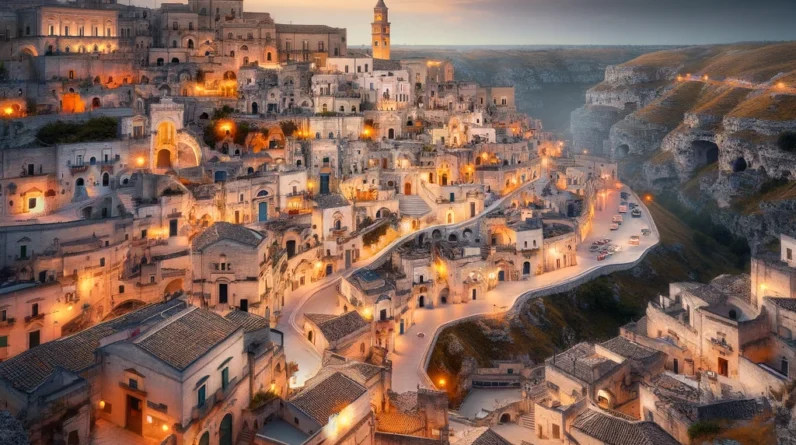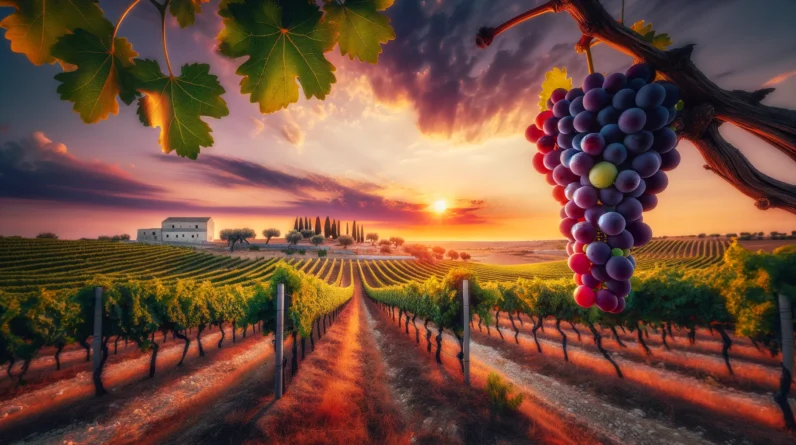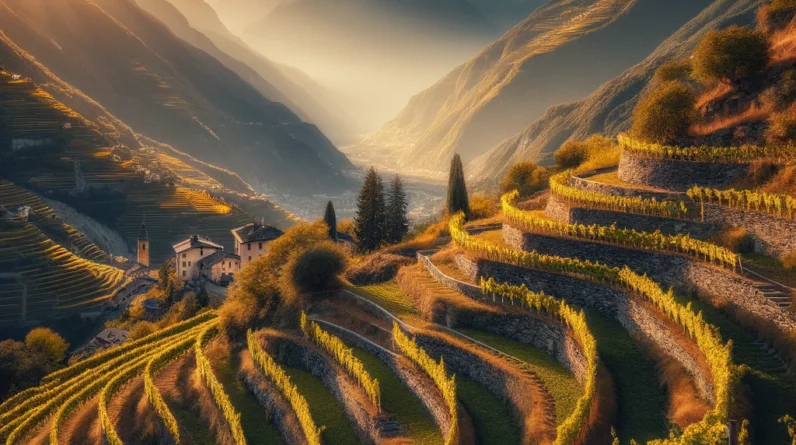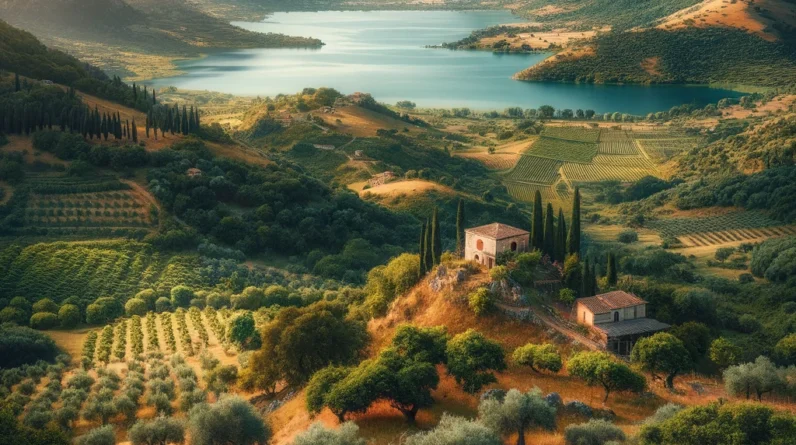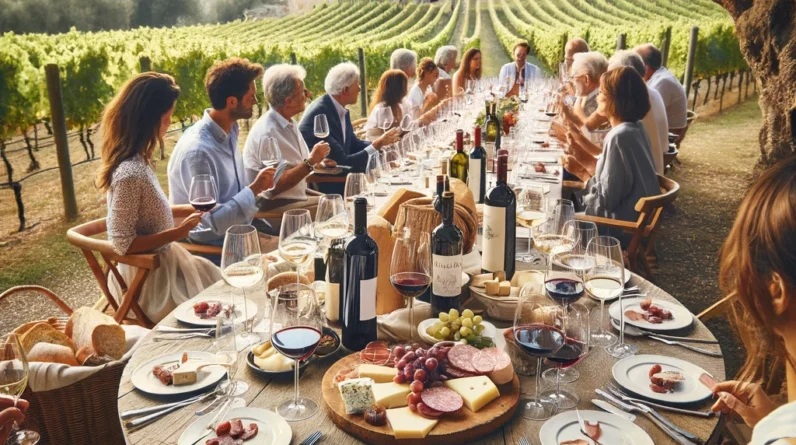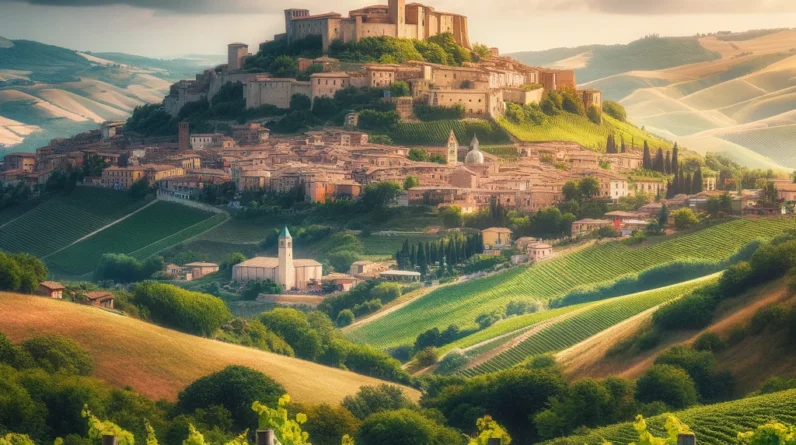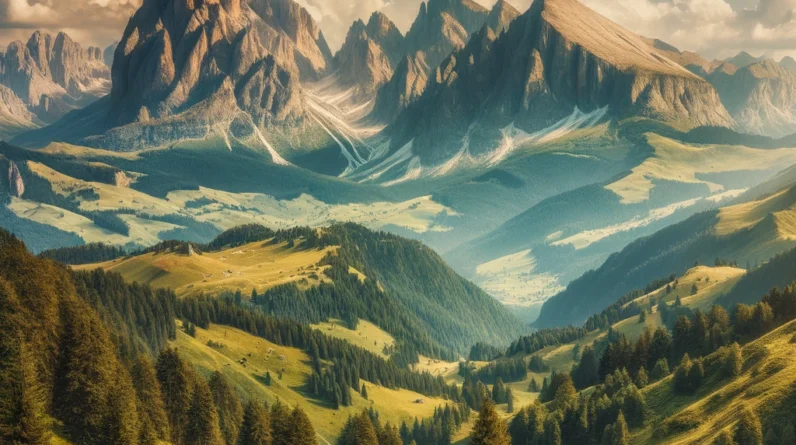
Exploring the Riches of Trentino-Alto Adige: A Wine Lover’s Paradise
Embark on a captivating journey to Trentino-Alto Adige, a region where the art of winemaking transcends mere tradition, evolving into a symphony of flavors, history, and natural beauty.
Nestled at the crossroads of the Italian and Austrian cultures, amidst the breathtaking backdrop of the Alps and Dolomites, this area is not just a destination but a vivid experience for the senses.
In this article, we will explore the various facets that make Trentino-Alto Adige a paradise for wine enthusiasts and travelers alike.
From the delicate nuances of its renowned wines to the picturesque vineyards, from culinary wonders to the rich historical tapestry, every aspect of this region offers something unique and unforgettable.
Whether you’re a seasoned wine connoisseur, an avid traveler, or simply a curious explorer, Trentino-Alto Adige’s world of wines promises to enchant and inspire.
So, let’s raise a glass and begin our exploration of this extraordinary wine region.

The Wine Spectrum: Diversity and Distinction
Trentino-Alto Adige is a haven for white wine lovers, boasting celebrated varieties like Pinot Grigio, Gewürztraminer, and Chardonnay.
But let’s not overlook its reds – Lagrein and Teroldego offer a robust and earthy counterpoint.
These wines are not just beverages; they’re stories in a glass, revealing a landscape where Italian flair meets Alpine freshness.
Trentino-Alto Adige, a wine region tucked away in the northernmost part of Italy, is a marvel of viticultural diversity and excellence.
This region, with its unique blend of Italian and Austrian influences, boasts a wine-making tradition that dates back centuries, creating a rich heritage that is reflected in every bottle.
Terroir: A Blend of Alpine and Mediterranean
The terroir of Trentino-Alto Adige is a tale of two climates.
On one hand, you have the cool, Alpine influence providing freshness and acidity to the grapes.
On the other, the warmer currents from the Mediterranean lend ripeness and robustness.
This duality creates a perfect balance in the wines, offering complexity and character.
Grapes: Diversity is Key
This region is a playground for a variety of grapes, both red and white.
For white wines, the area is renowned for grapes like Pinot Grigio, Chardonnay, and the aromatic Gewürztraminer.
Among the reds, Lagrein and Teroldego stand out, offering deep, earthy flavors.
These varieties are a testament to the region’s ability to nurture a wide range of grapes, each thriving in its microclimate.
| Grape Variety | Flavor Profile | Usage in Trentino-Alto Adige | Type |
|---|---|---|---|
| Pinot Grigio
| Crisp, fresh, with green apple and citrus notes | Widely used in white wine production | White |
| Gewürztraminer
| Rich, aromatic, with lychee and spice | Used in aromatic white wines | White |
| Chardonnay
| Buttery, with apple and citrus flavors | Common in both still and sparkling whites | White |
| Lagrein
| Full-bodied, with dark berry and spice | Primary grape for red wines in the region | Red |
| Teroldego
| Rich, with dark fruit and earthy tones | Key grape for red wines in the region | Red |
| Sauvignon Blanc
| Crisp, with green apple and tropical fruit | Used in crisp white wines | White |
| Merlot
| Medium-bodied, with red fruit and herbal notes | Used in both single varietal and blends for reds | Red |
| Pinot Bianco
| Fresh, with green apple and citrus | Common in white wines | White |
| Cabernet Sauvignon
| Bold, with black fruit and spice | Used in red blends | Red |
| Nosiola
| Delicate, floral, with hints of almond | Used in white wines, including sweet wines | White |
| Manzoni Bianco
| Fruity, with floral and almond notes | Used in white wines | White |
| Carmenère
| Rich, with dark fruit and herbal notes | Used in red blends | Red |
Soils: A Foundation of Flavors
The soil composition in Trentino-Alto Adige is as varied as its climate.
From the calcareous, rocky soils found in the mountainous areas to the richer, more fertile valleys – each type contributes uniquely to the wine’s minerality and taste profile.
The mountainous terrains, especially, stress the vines, resulting in grapes with concentrated flavors.
Climate: A Balancing Act
The climate of Trentino-Alto Adige is a fascinating interplay between the Alpine coolness and Mediterranean warmth.
This contrast is not just about temperatures; it’s about the interplay of sunlight, wind, and precipitation.
The region’s high altitude and the natural barrier of the Alps protect the vineyards from harsh northern winds, while the valleys channel the warmer air from the south, ensuring a longer ripening period for the grapes.
In essence, Trentino-Alto Adige is not just a wine region; it’s a testament to how geography, climate, and human passion can come together to create something truly extraordinary.
The wines from this region are not just beverages; they are narratives of the land, weather, and the people who have honed their craft over generations.
This region offers a sip of history, a taste of diverse terrains, and an experience of unmatched wine-making artistry.

Vineyard Ventures: More Than Just Grapes
The vineyards here are more than just wine sources; they’re scenic wonders.
Imagine sipping a glass of local wine while gazing at vineyards that sprawl across rolling hills and steep mountain slopes.
It’s not just about the wine; it’s about the experience – from historic estates to modern, eco-friendly operations.
| Vineyard | Designation | Grapes |
|---|---|---|
| Cantina Terlano
| DOC Terlano | Pinot Bianco, Chardonnay, Sauvignon Blanc |
| Elena Walch
| Alto Adige DOC | Gewürztraminer, Lagrein, Merlot |
| Alois Lageder
| Alto Adige DOC | Pinot Grigio, Chardonnay, Gewürztraminer |
| Cantina Tramin
| DOC Termeno | Gewürztraminer, Pinot Grigio, Chardonnay |
| Foradori
| Vigneti delle Dolomiti IGT | Teroldego, Nosiola, Manzoni Bianco |
| Tenuta San Leonardo
| Vigneti delle Dolomiti IGT | Cabernet Sauvignon, Carmenère, Merlot |
The Best Vintages in Trentino-Alto Adige
Identifying the “best” vintages in a wine region like Trentino-Alto Adige can be a subjective matter, as it often depends on personal taste, the particular grape varieties, and the style of wine one prefers.
However, some vintages stand out due to their exceptional weather conditions, leading to an outstanding quality of grapes and, consequently, superior wines.
Here are a few notable vintages from Trentino-Alto Adige:
2015: This year was exceptional for both red and white wines in the region.
The weather conditions were favorable, leading to well-balanced wines with good acidity and complexity.
2016: Another excellent year, especially for white wines.
The wines from this vintage are known for their crispness, aromatic intensity, and longevity.
2012: A standout year for red wines, particularly those that require more time to mature, like Teroldego and Lagrein.
The wines from this year are characterized by their depth, structure, and aging potential.
2010: This vintage was excellent for both reds and whites.
The wines are well-balanced, with a good combination of fruitiness and acidity, and they have aged beautifully.
2007: Known for producing robust and structured red wines.
This vintage was particularly favorable for grapes that thrive in warmer conditions.
2004: A vintage that produced elegant and aromatic whites.
The wines from this year are notable for their finesse and balance.
It’s important to note that the “best” vintages can vary depending on the specific wine and producer.
Trentino-Alto Adige’s diverse microclimates and range of grape varieties mean that different areas within the region might have varying levels of success in any given year.
Additionally, winemaking techniques and the evolution of wine styles over time can also influence how a vintage is perceived.
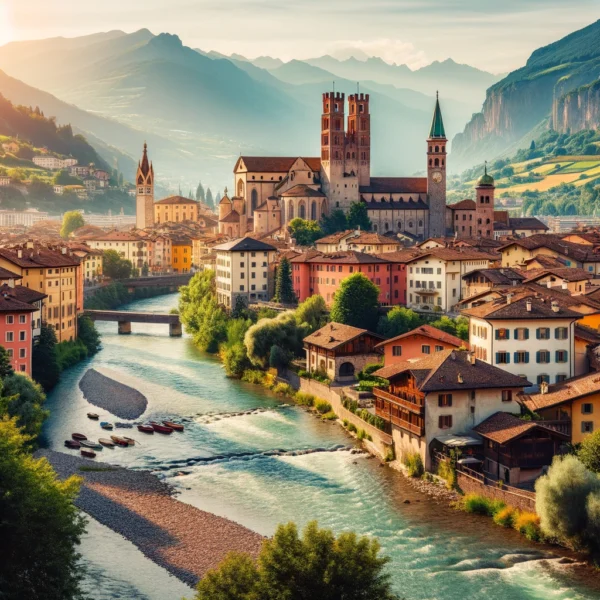
Winemaking in Trentino-Alto Adige
Winemaking in Trentino-Alto Adige is a blend of tradition and innovation, with techniques that have been refined over centuries.
The region’s winemakers employ a variety of methods, influenced by both their Italian heritage and the proximity to the Austrian and German winemaking traditions.
Here are some key techniques used in the region.
Temperature-Controlled Fermentation
Modern wineries in Trentino-Alto Adige often use temperature-controlled fermentation.
This is particularly important for white wines, as it helps preserve their delicate aromas and flavors.
The cool fermentation temperatures allow for a slow, steady conversion of sugars into alcohol, maintaining the freshness and crispness of the wine.
Stainless Steel and Oak Aging
The choice between stainless steel tanks and oak barrels for aging is a crucial aspect of winemaking in this region.
Stainless steel is commonly used for white wines, like Pinot Grigio and Chardonnay, to retain their freshness and fruitiness.
Reds and some richer whites, however, may be aged in oak to add complexity, depth, and tannin structure.
Use of Indigenous Yeasts
Many producers in Trentino-Alto Adige are embracing the use of indigenous yeasts for fermentation.
This method, which relies on the natural yeasts present on the grape skins and in the winery environment, can add unique, terroir-driven characteristics to the wine.
Traditional Method Sparkling Wines
The region is also known for its sparkling wines, particularly those made using the traditional method (Metodo Classico), where the secondary fermentation occurs in the bottle.
This technique is used to produce high-quality sparkling wines, including Trento DOC.
Pergola Training System
Historically, many vineyards in Trentino-Alto Adige have used the traditional pergola training system for their vines, although there’s a shift towards more modern trellising methods.
The pergola system is particularly well-suited to the region’s mountainous terrain and can help protect grapes from intense sunlight and promote air circulation.
Selective Harvesting
Given the region’s diverse microclimates and grape varieties, selective and often manual harvesting is crucial.
Winemakers carefully choose the optimal time to harvest each variety, ensuring grapes are at their ideal ripeness.
Minimal Intervention
A growing number of winemakers in the region are adopting a minimal intervention approach.
This philosophy minimizes the use of additives and technological manipulation, aiming to produce wines that are more natural and expressive of their terroir.
Passito Technique for Dessert Wines
For sweet wines, the passito technique is often used, where grapes are dried to concentrate their sugars before fermentation.
This method is prevalent in producing dessert wines like the region’s Vino Santo.
These techniques showcase Trentino-Alto Adige’s dedication to quality and respect for tradition, while also embracing modern practices to enhance the natural characteristics of their diverse grape varieties.
The result is a range of wines that are not only reflective of their Alpine environment but also the skill and innovation of their makers.

The Uniqueness of Trentino-Alto Adige
Trentino-Alto Adige wines hold a special place in the world of viticulture, and for several compelling reasons.
Unique Terroir
This region benefits from a remarkable combination of Alpine and Mediterranean climates.
The cool Alpine air ensures freshness and acidity in the grapes, while the warmer Mediterranean breezes contribute to their ripeness and flavor intensity.
This unique blend of climatic conditions is rare and contributes significantly to the distinct character of the wines.
Diverse Grape Varieties
The region is a melting pot of grape varieties, both indigenous and international.
White grapes like Pinot Grigio, Chardonnay, and the aromatic Gewürztraminer thrive here, as do reds like Lagrein and Teroldego.
This diversity allows for a wide range of wine styles – from crisp, refreshing whites to rich, full-bodied reds.
High-Quality Winemaking
Trentino-Alto Adige has a long history of winemaking, with techniques refined over centuries.
The winemakers here combine traditional methods with modern technology, ensuring high-quality production while maintaining the unique character of their wines.
Variety of Wine Styles
The region produces a vast array of wine styles.
From still to sparkling, dry to sweet, there’s a wine to suit every palate.
This versatility makes Trentino-Alto Adige wines appealing to a broad audience of wine enthusiasts.
Stunning Vineyard Landscapes
The vineyards in this region are not only productive; they are breathtakingly beautiful.
Nestled among the Alps and Dolomites, the picturesque settings of these vineyards add an intangible value to the wines they produce.
Innovative Sustainability Practices
Many vineyards in Trentino-Alto Adige are at the forefront of sustainable and organic winemaking practices.
This commitment to environmental stewardship not only appeals to eco-conscious consumers but also often leads to higher quality grapes and, therefore, better wines.
Culinary Harmony
The wines of Trentino-Alto Adige pair exceptionally well with a variety of cuisines.
The region’s own culinary traditions, which blend Italian and Austrian influences, have evolved in tandem with the local wines, creating perfect harmony between food and wine.
Global Appeal, Yet Distinct Identity
While these wines have gained international acclaim and are available globally, they retain a unique identity that speaks of their origin.
This balance of worldwide appeal and distinctive character is a hallmark of Trentino-Alto Adige wines.
In essence, the wines of Trentino-Alto Adige are not just beverages; they are a reflection of a region that is as diverse and dynamic as the wines it produces.
Each bottle tells a story of ancient traditions, unique terroir, and a commitment to quality that resonates with wine lovers around the world.

Foods of Trentino-Alto Adige
Pairing local wines with food is an art.
Trentino-Alto Adige’s wines complement a range of dishes, from traditional Italian pastas to Alpine cheeses.
The crisp acidity of a local Pinot Grigio can elevate a simple seafood dish, while a glass of Teroldego might be the perfect companion for heartier meats.
Trentino-Alto Adige, with its rich culinary heritage influenced by both Italian and Austrian cultures, offers a variety of special dishes that pair wonderfully with its diverse wines.
Here are some standout dishes and their ideal wine pairings.
Canederli (Bread Dumplings)
These hearty dumplings made from bread, eggs, milk, and speck (a local smoked ham) are a staple in the region.
Pair them with a medium-bodied, fruity red like Teroldego, which complements the savory flavors of the dumplings.
Speck Alto Adige PGI
This locally produced, lightly smoked and seasoned ham is delightful when enjoyed with a glass of Lagrein.
The wine’s robust character and berry flavors balance the smoky, salty notes of the speck.
Strangolapreti (Spinach and Bread Dumplings)
This traditional spinach dumpling dish is best paired with a crisp white wine like Pinot Bianco or Sauvignon Blanc, whose acidity and freshness complement the earthiness of the spinach.
Trout from Trentino
Freshwater trout is a common and delicious dish in this region.
Enjoy it with a glass of Chardonnay, which offers a buttery texture and apple notes that enhance the delicate flavors of the fish.
Apple Strudel
A famous dessert in the region, apple strudel is perfectly paired with a sweet and aromatic Gewürztraminer.
The wine’s lychee and spice notes harmonize beautifully with the sweetness and cinnamon in the strudel.
Polenta
A versatile staple, often served with mushrooms, cheese, or meat sauces.
Pair it with a light red like Schiava (Vernatsch) for a delightful combination, as the wine’s low tannin and bright fruitiness complement the polenta’s simplicity.
Tyrolean Goulash
This rich and hearty stew, often made with beef and seasoned with paprika, pairs well with a full-bodied red like Lagrein.
The wine’s tannins and dark fruit flavors stand up well to the boldness of the goulash.
Risotto with Teroldego
A risotto made with the region’s Teroldego wine creates a rich, flavorful dish.
Enjoy it with the same wine, Teroldego, to enhance the deep, berry and plum flavors in both the wine and the risotto.
These dishes and their wine pairings not only highlight the delicious cuisine of Trentino-Alto Adige but also showcase the region’s ability to create harmonious and memorable culinary experiences.
Planning the Perfect Trip: Wine Tourism
Trentino-Alto Adige is a prime destination for wine tourism.
Vineyard tours and tastings are just the start.
The region invites visitors to immerse themselves in the local wine culture, offering a holistic experience that combines scenic beauty with culinary delight.
Trentino-Alto Adige, a region rich in natural beauty and cultural heritage, offers a plethora of special places to see and visit.
Whether you’re a nature lover, a history enthusiast, or just seeking breathtaking scenery, this region has something for everyone.
Dolomites
These stunning UNESCO World Heritage-listed mountains offer dramatic landscapes, hiking trails, and winter sports opportunities.
The Dolomites are not just a natural wonder but also a place for adventure and relaxation.
Lake Garda
The largest lake in Italy, located on the southern edge of Trentino-Alto Adige, is known for its crystal-clear waters, charming towns like Riva del Garda, and opportunities for sailing, windsurfing, and hiking.
Merano
Famous for its spa resorts and beautiful promenades, Merano is a blend of Austrian charm and Italian elegance.
Don’t miss the Gardens of Trauttmansdorff Castle, which offer stunning botanical collections and scenic views.
Bolzano (Bozen)
The capital city of South Tyrol, Bolzano is known for its medieval city center, the South Tyrol Museum of Archaeology (home to the famous Ice Man, Ötzi), and vibrant markets.
It’s a cultural hub where Italian and German cultures merge.
Trento
A city rich in history and culture, Trento offers attractions like the stunning Buonconsiglio Castle, the impressive Trento Cathedral, and the MUSE Science Museum.
It’s a perfect blend of history, art, and modernity.
Val di Funes (Villnöß)
Known for its picturesque views and traditional Tyrolean architecture, this valley offers some of the best views of the Dolomites, especially the iconic Odle mountain peaks.
The Wine Road (Strada del Vino)
This route winds through some of the most important wine-producing areas in South Tyrol.
It’s an ideal way to explore the region’s vineyards, wineries, and quaint villages.
Seiser Alm (Alpe di Siusi)
Europe’s largest high-altitude alpine meadow, offering spectacular panoramic views, hiking trails in summer, and skiing in winter.
Castelrotto (Kastelruth) and Alpe di Siusi
These charming towns are gateways to the Sciliar-Catinaccio Natural Park, with breathtaking scenery and traditional Tyrolean culture.
Renon (Ritten) and the Earth Pyramids
A plateau offering stunning views and the unique earth pyramids – tall, cone-shaped pillars formed by erosion.
Each of these places offers a unique glimpse into the heart of Trentino-Alto Adige, where natural beauty, ancient history, and rich cultural traditions converge.
Whether you’re exploring the scenic mountains, strolling through historic towns, or embarking on a culinary journey through its vineyards, this region promises an unforgettable experience.

Practical Tips on Visiting Trentino-Alto Adige
Visiting Trentino-Alto Adige can be an enchanting experience, and a few practical tips can help ensure your trip is as enjoyable and smooth as possible.
Best Time to Visit
The region is a year-round destination, but choose your timing based on your interests.
Summer (June to August) is ideal for hiking and exploring the lakes and vineyards.
Winter (December to March) is perfect for skiing and winter sports in the Dolomites.
Autumn is excellent for wine-tasting and enjoying the harvest season, while spring offers beautiful blooms and fewer tourists.
Language Considerations
The region is bilingual, with Italian and German widely spoken.
Learning some basic phrases in both languages can be helpful and appreciated by locals.
English is commonly spoken in tourist areas but less so in rural spots.
Getting Around
Renting a car can be the most convenient way to explore the region, especially the more rural areas.
Public transport is reliable and efficient, with a good network of buses and trains, particularly useful for major towns and cities.
Accommodation Options
Consider staying in agriturismos (farm stays) for a more authentic experience.
These often offer local food and a chance to immerse yourself in the rural lifestyle.
Hotels and B&Bs are available in cities and tourist areas.
Dress for the Weather
The region has a varied climate.
Pack layers for the mountains, even in summer, as weather can change quickly.
In winter, ensure you have warm clothing and appropriate gear if you plan to engage in winter sports.
Local Cuisine
Don’t miss trying local dishes and wines.
The region is known for its unique blend of Italian and Austrian cuisines.
Attending a wine tasting or visiting a vineyard can be a highlight of your trip.
Respect Nature
If hiking or enjoying outdoor activities, always respect nature.
Stay on marked trails, don’t disturb wildlife, and carry out all trash.
Cultural Etiquette
Respect local customs and traditions.
This includes being punctual, polite, and respectful in interactions.
In more rural or traditional areas, conservative dress may be appreciated.
Stay Connected
While Wi-Fi is widely available in hotels and public places, consider a local SIM card if you need consistent internet access, especially in more remote areas.
Emergency Numbers
Know the local emergency numbers (112 for general emergencies).
It’s also wise to have addresses and contact numbers for your country’s embassy or consulate.
Remember, every trip is an opportunity to create lasting memories, so embrace the local culture, explore beyond the tourist trails, and enjoy the natural beauty and hospitality that Trentino-Alto Adige offers!
Trentino-Alto Adige is not just a region; it’s a testament to the enduring relationship between humans and nature, where each bottle of wine is a narrative of geography, history, and passion.
Whether you’re a casual drinker, a connoisseur, or somewhere in between, this region promises an enriching journey through the world of wines.
FAQs:
Q1: What makes Trentino-Alto Adige unique in terms of wine production?
A1: Trentino-Alto Adige is unique due to its diverse microclimates, a blend of Alpine and Mediterranean influences, and a variety of soil types.
This combination allows for a wide range of grape varieties and wine styles, from crisp and aromatic whites to robust and flavorful reds.
Q2: What are the most popular grape varieties in Trentino-Alto Adige?
A2: The region is renowned for both white and red varieties.
Popular whites include Pinot Grigio, Chardonnay, and Gewürztraminer, while notable reds are Lagrein and Teroldego.
Each grape contributes to the region’s reputation for high-quality, distinctive wines.
Q3: Can I visit vineyards in Trentino-Alto Adige?
A3: Absolutely! Many vineyards offer tours and tastings.
These experiences provide insights into the winemaking process, the region’s history, and the opportunity to taste unique wines while enjoying the stunning landscapes.
Q4: Are there any wine festivals or events in Trentino-Alto Adige?
A4: Yes, the region hosts various wine events and festivals throughout the year, celebrating its rich wine culture.
These events are perfect opportunities to sample a wide range of local wines and meet the producers.
Q5: What food pairings work well with Trentino-Alto Adige wines?
A5: The region’s wines pair wonderfully with a variety of cuisines.
The crisp whites are excellent with seafood and light pasta dishes, while the robust reds complement heartier meats and cheese.
The local cuisine of Trentino-Alto Adige also offers perfect pairing options.
Q6: Are there sustainable or organic vineyards in the region?
A6: Yes, sustainability and organic practices are increasingly important in Trentino-Alto Adige.
Many vineyards are adopting eco-friendly methods, focusing on sustainable viticulture and organic wine production.
Q7: What is the best time of year to visit Trentino-Alto Adige for wine tourism?
A7: The best time to visit is during late summer and autumn, especially around harvest time when the vineyards are at their most active and the scenery is breathtaking.
However, the region offers unique experiences throughout the year.
Q8: How do the Alpine and Mediterranean climates influence the wines?
A8: The Alpine climate contributes to the freshness, acidity, and aromatic qualities of the wines, while the Mediterranean influence adds ripeness and body.
This combination creates a unique balance and complexity in the wines of Trentino-Alto Adige.
Q9: Can I find Trentino-Alto Adige wines outside of Italy?
A9: Yes, the wines from this region are exported globally.
They can be found in many countries, offering wine lovers around the world a taste of this unique Italian wine region.
Q10: Is Trentino-Alto Adige suitable for wine collectors and investors?
A10: Definitely. The region produces some exquisite and sought-after wines, making it an attractive option for collectors and investors.
Certain vintages and labels from this region have shown excellent potential for appreciation over time.
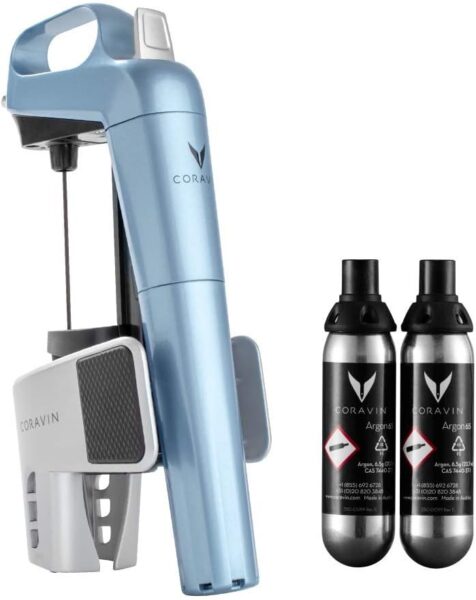
Experience Wine Like Never Before with Coravin!
🍷 Introducing the Coravin Model Limited Edition Wine Preservation System in Steel Blue 🍷
🌟 Savor Every Drop: Why settle for just one bottle? With Coravin, enjoy any wine, any time, without ever pulling the cork. Your wine collection, unlocked with unparalleled freedom.
💎 Elegant Design, Superior Quality: Crafted in stunning Steel Blue and made with durable stainless steel, this isn’t just a wine tool; it’s a centerpiece that speaks to your sophisticated taste.
🚀 State-of-the-Art Technology: Featuring a Teflon coated wine needle, pour your wine smoothly and effortlessly, preserving every cork and every flavor.
🌬️ Ultimate Preservation: Each Coravin capsule uses ultra-pure argon gas to protect your wine from oxidation. Your last glass will be just as perfect as your first, even years later.
🎉 Perfect for Every Occasion: Whether you’re hosting a party or enjoying a quiet evening, Coravin ensures your favorite wine is always on the menu.
💡 Easy and Convenient: Celebrated for its ease of use and light weight, make every pour a joyous experience.
💸 A Wise Investment: Praised for its value for money, Coravin is not just a luxury; it’s an essential for every wine lover.
🌐 Ready for the World: Designed for US outlets but adaptable globally, your Coravin experience knows no bounds.
👉 Get Yours Today! Elevate your wine experience with Coravin. 🍇✨



